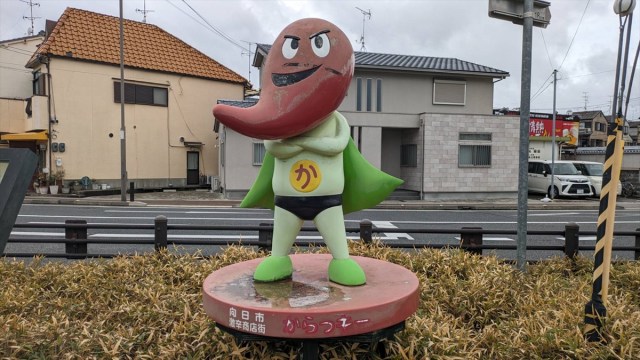
A trip that was meant to be pleasantly nostalgic resulted in a big shock, but also came with a silver, spicy lining.
Muko City in Kyoto Prefecture is a small city just to the west of Kyoto City. In 2009, Muko began a revitalization campaign by designating select eateries as part of an area dubbed Gekikara Shotengai, meaning “Super Spicy Shopping Market.” Our Japanese-language reporter with a fondness for wine lucky boxes and spicy food, Haruka Takagi, had visited the area during her student days 10 years ago and had a blast trying some of the spiciest food she had ever tasted. She hadn’t heard much about the area in recent years, though, and recently decided to pay it a visit.
In Haruka’s memory, there was a lively shopping complex called Life City next to the heart of Gekikara Shotengai and not far from Higashi-Muko Station, so that’s where she headed first. The atmosphere of the station felt the same as it did 10 years ago.
That didn’t mean nothing had changed, though. The retro-style cafe next to the station had closed and was replaced by a standing bar called Suiba. She thought a quick drink might actually be nice for people waiting for a train or bus, and the prices were definitely reasonable.
As Haruka headed straight out from the station, she caught sight of an intersection with a steady stream of cars but no traffic signal. There was also a Gyoza no Ohsho location that she recognized from her previous visit but hadn’t eaten at since she had opted for a Gekikara Shotengai spicy restaurant called Minmin instead.
From there she headed west, where Life City and Gekikara Shotengai were waiting for her.
…make that where they should have been waiting for her. She was rattled to her core. All she could find of the Gekikara Shotengai was one sign with the character for kara (辛) or “spicy.” Even more shocking, however, was that the spot where Life City had been was now a lonely-looking abandoned lot.
What the heck was going on here?! She kept walking, lost and befuddled. Where was the market? The banners? The signs proclaiming “Beware of gekikara (ultra spiciness)”?!
Did she make a wrong turn somewhere, or were her memories mistaken? She had come all this way to Muko City to find nothing. It was as if she had been tricked into believing some fake memories she had of this place.
As she kept circling the area between the station and where Life City should have been with an extremely puzzled expression, a male security guard who was directing traffic at the intersection approached her.
Guard: “Excuse me, are you looking for something?”
Haruka: “Isn’t the Gekikara Shotengai supposed to be around here?”
Guard: “Ah, that place. It’s not here anymore.”
Haruka: “Not…here…?!”
Guard: “That’s right. This area has changed a lot. See over there? A huge apartment complex was built and Life City was completely demolished. On the other side [east side] of the tracks there are still a few shops, but for the most part, Gekikara Shotengai no longer exists.”
Haruka thanked him and began to walk away, but the devastation of hearing that the spicy area no longer existed prevented her mouth from forming any other words. She’d figured it might be smaller than it was back in the peak of its popularity…but to learn that it was basically wiped off the map was too shocking. Searching on her phone, she also learned that Life City had closed in 2020 but wasn’t demolished until late 2023–so the structure of it had remained until recently.
While almost all of her motivation had now deflated, she still latched onto the nugget that the man had told her about there still being a few shops on the other side of the train tracks. She decided to pay that side a visit before going home. She trudged along, crossing the tracks, and within two minutes caught sight of something promising on a shopfront.
Yes, it really was there–at the Tonkotsu Himawari (“sunflower”) restaurant, there was a banner for Gekikara Shotengai!!
And that wasn’t all, because she also spotted Kirinen, a famous Chinese-style restaurant that had made countless people cry from its ultra spicy tantanmen and mapo tofu.
Thankfully, there was still spice to be found in this town after all.
While Haruka had been searching in vain earlier, both of the restaurants had finished their lunch service, but that didn’t matter to her at this point. Sure, it would have been nice to eat at one of them, but just being able to finally see the Gekikara Shotengai banners with her own eyes after that rollercoaster ride of emotions made coming all the way to Muko City worth it in the end. She wanted to cry in happiness.
Things took an even better turn as she headed back to Higashi-Muko Station and a familiar character came into view.
It was none other than Kalucky, the mascot character of Gekikara Shotengai with a pepper for a head. His name is a portmanteau of kara, meaning “spicy,” and the English word “lucky.”
A monument of Kalucky with slightly faded colors was still standing, too. He stood proudly as if to tell the world that yes, Muko City is still a city that seeks to champion super spicy things.
At this point Haruka was really was craving something spicy, so she pulled up Google maps and found a miraculous discovery about 15 minutes away by car in Kyoto City’s Fushimi Ward: a famous mapo tofu specialty restaurant called Karaimonya.
There was no way she was going to miss this opportunity so she grabbed a cab and headed over. A bowl of the famous mapo tofu cost 950 yen (US$6.40), plus, for an additional 100 yen, she was able to order it “extra spicy.”
▼ At Karaimonya, you choose your desired spiciness level and whether you’d like rice or noodles.
It turned out to be some of the darkest, most intense-looking mapo tofu sauce she had ever seen.
To sum up her first bite in five words: umami – hotness – depth – fragrance – NUMBNESS.
It was so incredibly spicy that Haruka’s taste buds seemed to be confusing the spice for actual temperature heat. Even while eating it with white rice, her body felt like it was growing warmer and warmer with each bite, with beads of sweat glistening from her pores. Her stomach felt like it was smoldering inside, but she didn’t care because it was just so darn delicious.
Filled with supreme spicy satisfaction, the earlier sadness of the day seemed off in a far, distant place.
While her trip wasn’t anything like the nostalgic walk down memory lane that she had expected, Haruka is still glad that she went. She also says that you should take this experience as a sign to revisit all of those beloved places in your memories while you still can.
Reference: Kyoto Muko City Gekikara Shotengai, Karaimonya, Himawari, Kirinen
All images © SoraNews24
● Want to hear about SoraNews24’s latest articles as soon as they’re published? Follow us on Facebook and Twitter!
[ Read in Japanese ]

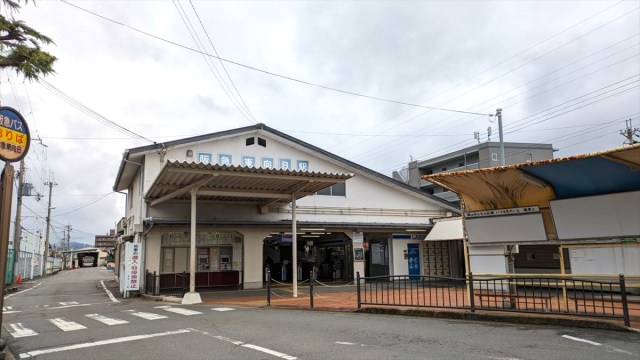
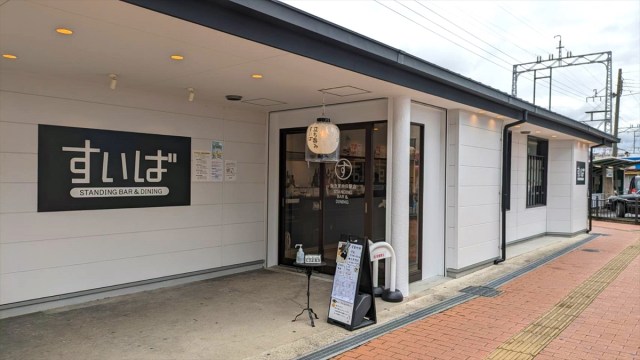
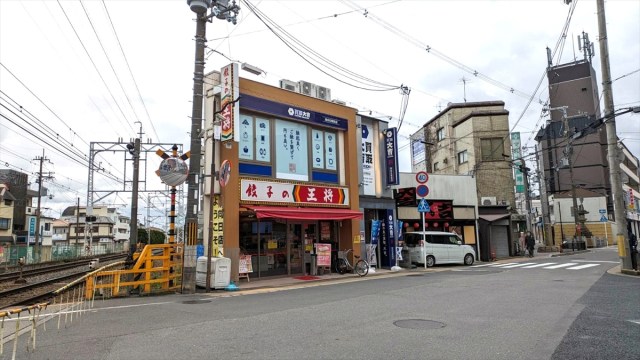
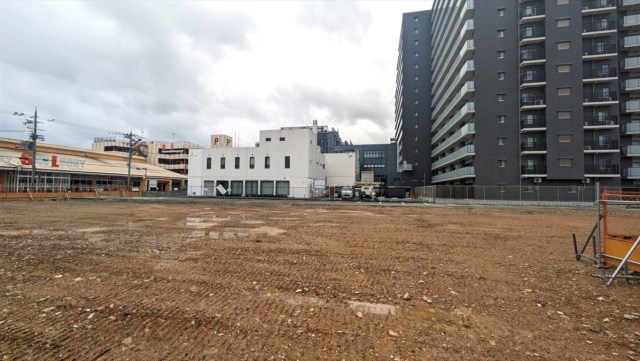
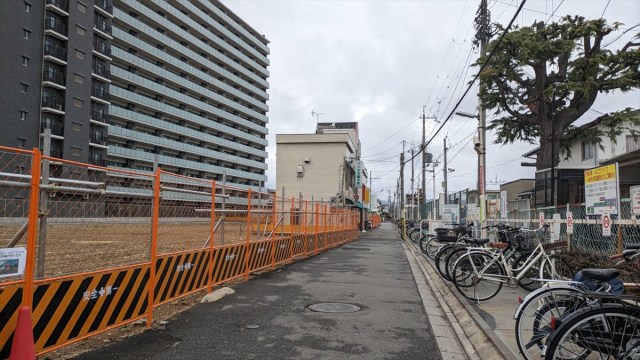
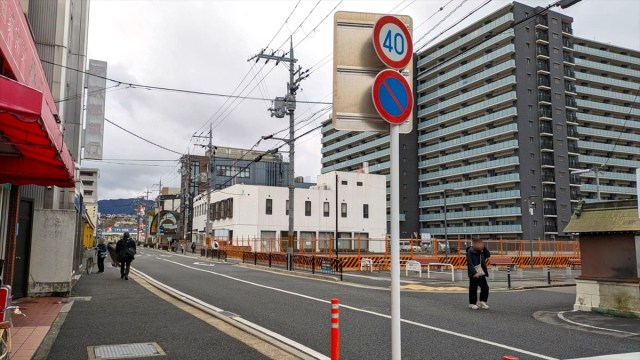
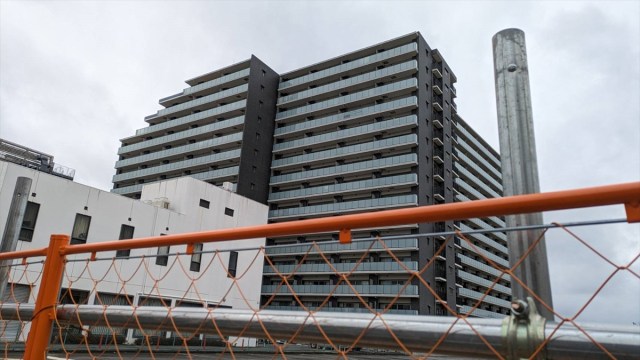
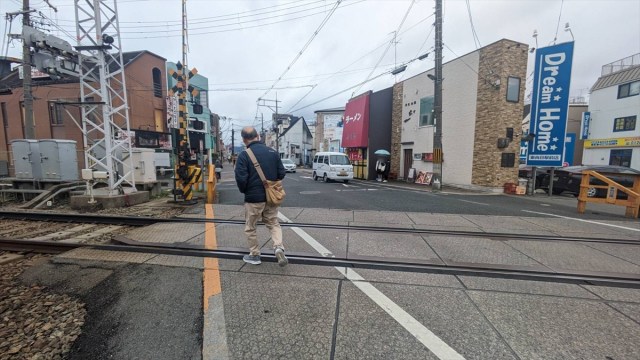
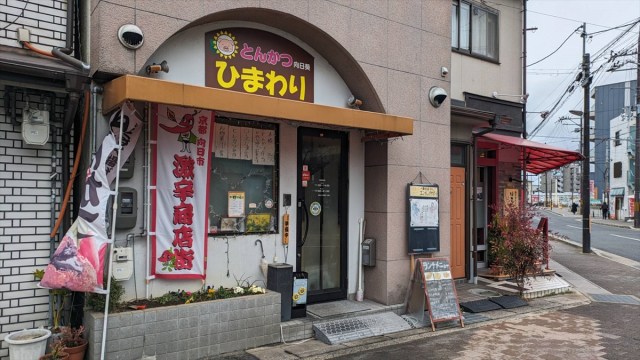
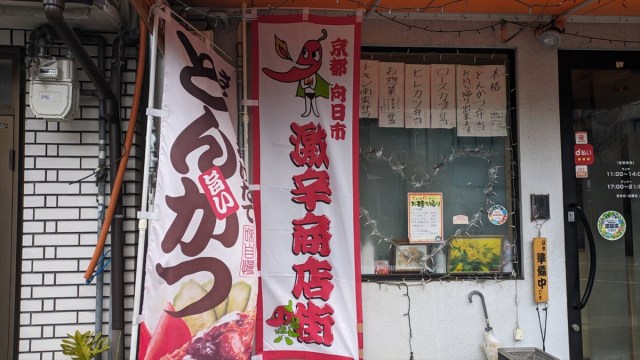
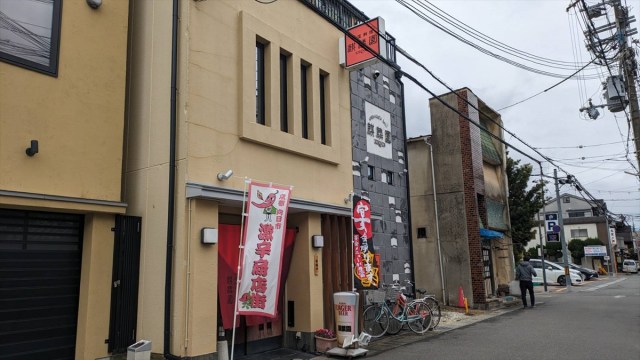
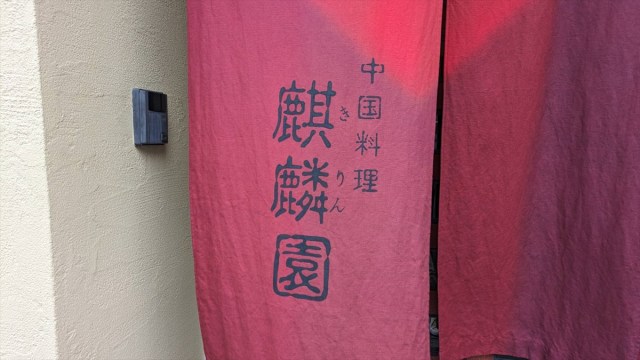
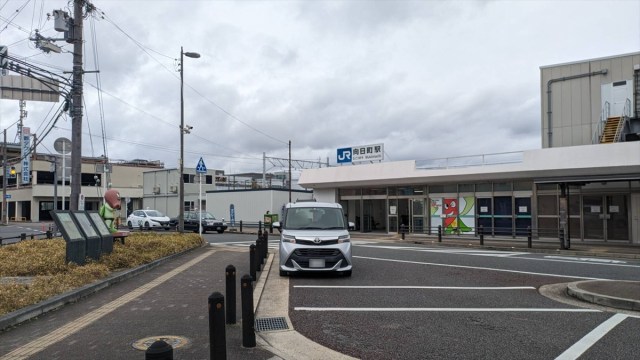
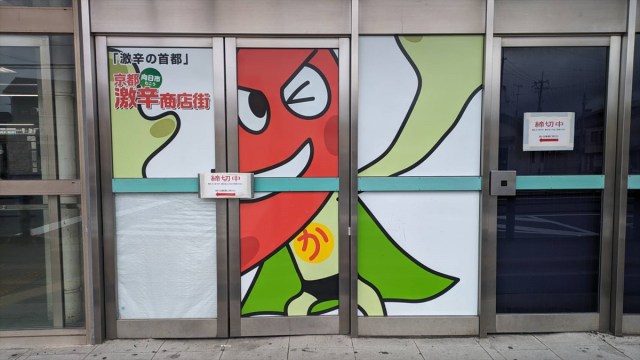
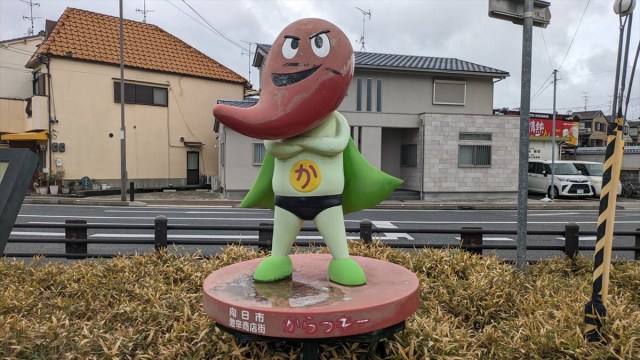
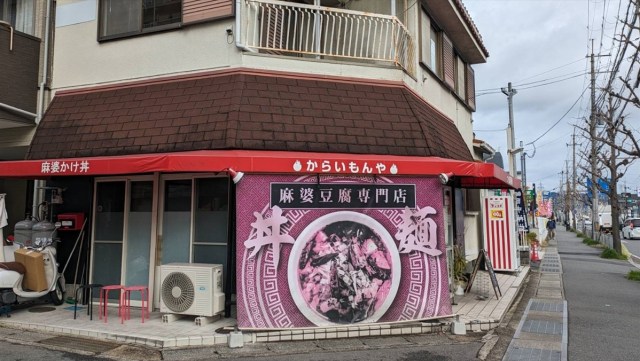
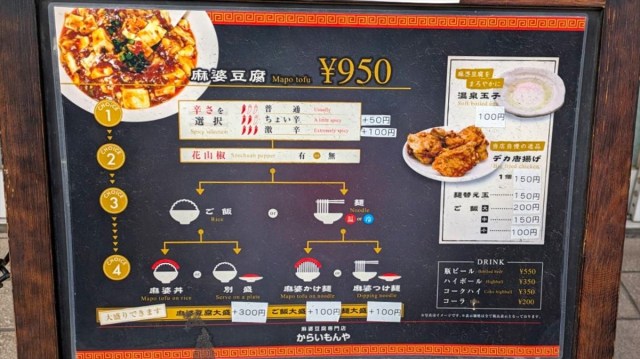
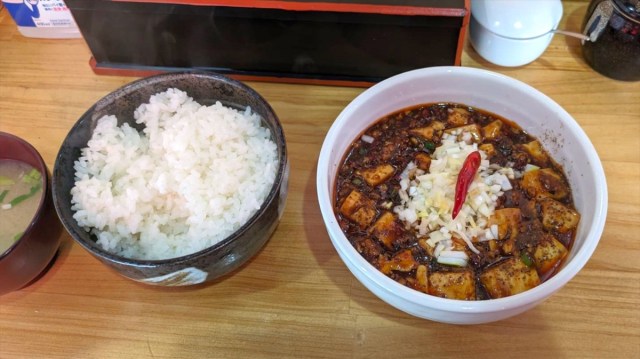
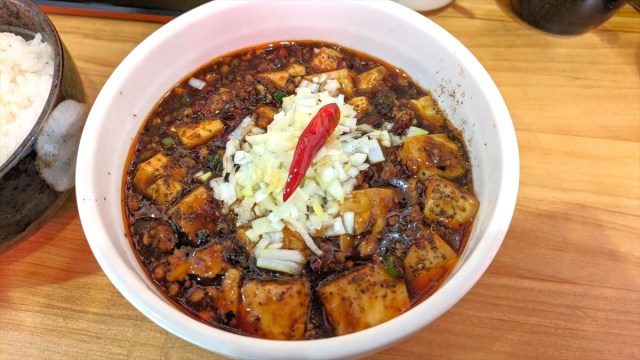
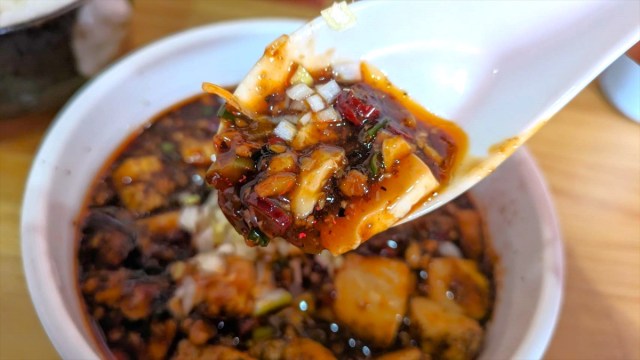
 The top 10 shotengai shopping streets in Tokyo【Survey】
The top 10 shotengai shopping streets in Tokyo【Survey】 We visit a train station in historical ninja town, see ninja trick art, and become ninjas ourselves
We visit a train station in historical ninja town, see ninja trick art, and become ninjas ourselves Visit a pepper-packed tribute to spiciness tucked away in an Osaka food court
Visit a pepper-packed tribute to spiciness tucked away in an Osaka food court Kumamoto Police sergeant reprimanded for making officers eat spicy instant noodles
Kumamoto Police sergeant reprimanded for making officers eat spicy instant noodles Free food awaits those who finish “Spicy Mapo Tofu of Hell,” but it isn’t easy
Free food awaits those who finish “Spicy Mapo Tofu of Hell,” but it isn’t easy Hello, cosmetics! Clinique teams up with Hello Kitty this summer for first-time collaboration
Hello, cosmetics! Clinique teams up with Hello Kitty this summer for first-time collaboration Japan’s new difficult-to-drink-from beer glass protects your liver, but it’s a brutal experience
Japan’s new difficult-to-drink-from beer glass protects your liver, but it’s a brutal experience Demon Slayer: Kimetsu no Yaiba gets new roller coaster attractions and food at Universal Studios Japan
Demon Slayer: Kimetsu no Yaiba gets new roller coaster attractions and food at Universal Studios Japan How to order snacks on a Shinkansen bullet train in Japan
How to order snacks on a Shinkansen bullet train in Japan Nintendo history you can feel – Super NES, N64, and GameCube controllers become capsule toys
Nintendo history you can feel – Super NES, N64, and GameCube controllers become capsule toys New samurai glasses are Japan’s latest weird must-have souvenir
New samurai glasses are Japan’s latest weird must-have souvenir High-fashion Totoro cuddle purse is like an elegant stroll in the forest【Photos】
High-fashion Totoro cuddle purse is like an elegant stroll in the forest【Photos】 Caffeinated ramen for gamers that you can eat with one hand going on sale in Japan
Caffeinated ramen for gamers that you can eat with one hand going on sale in Japan Burger King Japan suddenly adds Dr. Pepper and Dr. Pepper floats to its menu nationwide
Burger King Japan suddenly adds Dr. Pepper and Dr. Pepper floats to its menu nationwide McDonald’s adds a new Cheese Bacon Potato Pie to its menu in Japan for a limited time
McDonald’s adds a new Cheese Bacon Potato Pie to its menu in Japan for a limited time “The most Delicious Cup Noodle in history” – Japan’s French Cup Noodle wins our heart【Taste test】
“The most Delicious Cup Noodle in history” – Japan’s French Cup Noodle wins our heart【Taste test】 Starbucks releases a cute Frappuccino and Unicorn Cake…but not in Japan
Starbucks releases a cute Frappuccino and Unicorn Cake…but not in Japan Kyoto Tower mascot termination reveals dark side behind cute Japanese characters
Kyoto Tower mascot termination reveals dark side behind cute Japanese characters McDonald’s Japan’s Soft Twist Tower: A phantom ice cream only sold at select branches
McDonald’s Japan’s Soft Twist Tower: A phantom ice cream only sold at select branches Yabai Ramen: What makes this Japanese ramen so dangerous?
Yabai Ramen: What makes this Japanese ramen so dangerous? Finally! Nintendo Japan expands Switch 8-bit controller sales to everybody, Online member or not
Finally! Nintendo Japan expands Switch 8-bit controller sales to everybody, Online member or not Japanese government wants to build luxury resorts in all national parks for foreign tourists
Japanese government wants to build luxury resorts in all national parks for foreign tourists To combat declining birth rate, Japan to begin offering “Breeding Visas” to foreigners
To combat declining birth rate, Japan to begin offering “Breeding Visas” to foreigners 10 things you should buy at 7-Eleven in Japan
10 things you should buy at 7-Eleven in Japan Studio Ghibli releases anime heroine cosplay dresses that are super comfy to wear
Studio Ghibli releases anime heroine cosplay dresses that are super comfy to wear Woman charged for driving suitcase without a license in Osaka
Woman charged for driving suitcase without a license in Osaka Studio Ghibli unveils My Neighbour Totoro miniature house model
Studio Ghibli unveils My Neighbour Totoro miniature house model Kyoto experiencing problems with foreign tourists not paying for bus fares, but not on purpose
Kyoto experiencing problems with foreign tourists not paying for bus fares, but not on purpose Fighting mild hunger with a Japanese soda that turns into jelly in the stomach【Taste test】
Fighting mild hunger with a Japanese soda that turns into jelly in the stomach【Taste test】 Studio Ghibli’s Howl’s Moving Castle tapestry unveiled in Japan for first time
Studio Ghibli’s Howl’s Moving Castle tapestry unveiled in Japan for first time McDonald’s new Happy Meals offer up cute and practical Sanrio lifestyle goods
McDonald’s new Happy Meals offer up cute and practical Sanrio lifestyle goods Sales of Japan’s most convenient train ticket/shopping payment cards suspended indefinitely
Sales of Japan’s most convenient train ticket/shopping payment cards suspended indefinitely Sold-out Studio Ghibli desktop humidifiers are back so Totoro can help you through the dry season
Sold-out Studio Ghibli desktop humidifiers are back so Totoro can help you through the dry season Japanese government to make first change to romanization spelling rules since the 1950s
Japanese government to make first change to romanization spelling rules since the 1950s Foreigner’s request for help in Tokyo makes us sad for the state of society
Foreigner’s request for help in Tokyo makes us sad for the state of society Ghibli founders Toshio Suzuki and Hayao Miyazaki contribute to Japanese whisky Totoro label design
Ghibli founders Toshio Suzuki and Hayao Miyazaki contribute to Japanese whisky Totoro label design Doraemon found buried at sea as scene from 1993 anime becomes real life【Photos】
Doraemon found buried at sea as scene from 1993 anime becomes real life【Photos】 Tokyo’s most famous Starbucks is closed
Tokyo’s most famous Starbucks is closed Princesses, fruits, and blacksmiths: Study reveals the 30 most unusual family names in Japan
Princesses, fruits, and blacksmiths: Study reveals the 30 most unusual family names in Japan Vending machine noodle ice cream: A retro icon in Japan brings joy to a new generation
Vending machine noodle ice cream: A retro icon in Japan brings joy to a new generation McDonald’s Japan releases Spicy Chicken McNuggets so spicy they’ll knock you out? 【Taste Test】
McDonald’s Japan releases Spicy Chicken McNuggets so spicy they’ll knock you out? 【Taste Test】 Kyoto’s 100 Demons yokai monster parade returns!
Kyoto’s 100 Demons yokai monster parade returns! We visit Kaiyodo Kappa Museum: dedicated to a yokai that loves cucumbers and human souls
We visit Kaiyodo Kappa Museum: dedicated to a yokai that loves cucumbers and human souls We hunt for Dom Pérignon in these wine fukubukuro lucky bag boxes from Kaldi
We hunt for Dom Pérignon in these wine fukubukuro lucky bag boxes from Kaldi Can slapping on some nose filters prevent the anguish of hay fever?
Can slapping on some nose filters prevent the anguish of hay fever? Survey ranks the most popular Japanese curry dishes during winter
Survey ranks the most popular Japanese curry dishes during winter Puyo Puyo Manju return after 21 years…and our Puyo Puyo fan reporter achieves a childhood dream
Puyo Puyo Manju return after 21 years…and our Puyo Puyo fan reporter achieves a childhood dream Amigara Fault for cars?! Tunnel in Okayama just barely big enough for vehicles to fit through
Amigara Fault for cars?! Tunnel in Okayama just barely big enough for vehicles to fit through Our search for Kyoto Station’s cheapest souvenir reveals a surprisingly sweet find
Our search for Kyoto Station’s cheapest souvenir reveals a surprisingly sweet find Making a traditional Japanese dessert from “heaven grass”【Photos】
Making a traditional Japanese dessert from “heaven grass”【Photos】 The most expensive ice cream in Japan? Metallic soft serve frays the nerves of staff who make it
The most expensive ice cream in Japan? Metallic soft serve frays the nerves of staff who make it Shop in Tokyo’s Chinatown has TWENTY kinds of delicious homemade steamed buns
Shop in Tokyo’s Chinatown has TWENTY kinds of delicious homemade steamed buns What’s it like traversing Tokyo using only wheelchair accessible routes?
What’s it like traversing Tokyo using only wheelchair accessible routes? Can Kyoto supermarket takeout let you enjoy the local cuisine without fancy restaurant prices?
Can Kyoto supermarket takeout let you enjoy the local cuisine without fancy restaurant prices? Weird Japanese vending machine comes with a heartwarming twist
Weird Japanese vending machine comes with a heartwarming twist End-of-the-line exploring in Japan: Visiting Hashimoto Station
End-of-the-line exploring in Japan: Visiting Hashimoto Station
Leave a Reply